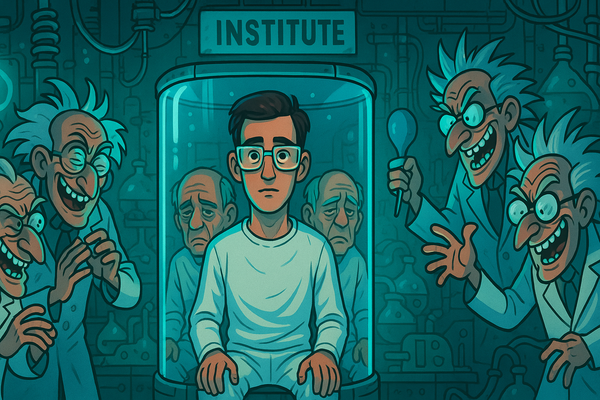Day ... 1 Again
Happy New Year!
Happy New Year! May it be far better than the one that has passed.
What can I say in my defense? Nothing, really — there are no excuses. New Year, Christmas, and other holidays are wonderful, but if you’re looking for excuses, visit the church calendar. You’ll quickly find inner peace, knowing that the devout have already done the hard work of inventing daily reasons for us. But what those reasons are for — having a drink or choosing another day not to drink — is up to each individual. After all, how does Saint Elijah’s day relate to you, the hypothetical Ivan Vasilyevich? Science remains silent on this matter.
Well, never mind. I avoid writing an internal report, so I engage in these discussions.
So, what should I write? Everyone already knows that I failed to keep my promises to myself and you.
Not too much, of course; I only had a couple of beers and smoked a couple of cigarettes. But the fact remains — I broke my promise. OK, let’s chalk it up to the holidays and start fresh from the first Monday of the new year.
Parallel lines in the real world
And here’s a topic for debate. It’s an old argument I had with a friend. The question is: do parallel lines exist in the real world? The discussion also touched on line segments, but that’s a matter of the relationship between the whole and the part. If parallel lines (the whole) don’t exist, then parallel segments (the part) don’t exist either.
I argued that they don’t exist because, on the microscopic level, there will always be deviations from parallelism. Concepts like points, lines, circles, and perpendicularity are mathematical constructs. Please don’t mention examples like two sunbeams, as gravity distorted them.
I’m revisiting this question today because I remembered ChatGPT, and here’s what it said…
In the real world, absolutely parallel lines, as described in Euclidean geometry, cannot exist because any physical object is subject to microscopic irregularities and deviations. The concept of parallel lines is an idealization used in mathematics to describe the relationships between lines in space.
However, in engineering and architecture, efforts are often made to create lines as close to parallel as possible. For instance, railway tracks or power lines are designed to be parallel. Still, at both macro and micro levels, deviations always exist due to physical constraints, material properties, and environmental influences.
In nature, the concept of parallelism also appears in approximate forms. For example, horizontal layers of sedimentary rock or light rays from a distant source may appear parallel. Yet even here, absolute parallelism does not exist due to gravity and the curvature of space.
Concise, simple, and straightforward. What’s your opinion? So, we’re getting back on the path to self-improvement. Stay tuned for further updates.

